Question No 28 Chapter No 5
28. Show an Accounting Equation on the basis of the following transaction: –
(i) Sunil Started business with cash of 1,50,000
(ii) Opened a Bank account by depositing Rs 25,000 out of cash
(iii) He sold his personal car for Rs 50,000 and deposited the amount in
the firm’s bank account
(iv) He purchased a building and furniture for 1,00,000
(v) He purchased goods from Ram on Credit 50,000
(vi) He paid cartage 500
(vii) He sold to Shyam on credit goods costing Rs 6,000 for 9,00
(viii) Received rent from tenants 1,000
(ix) Received security deposit from tenants 1,500
(x) Purchased stationery for cash 100
(xi) Invested in shares(personal) 50,000
(xii) Received interest in cash 200
(xiii) Introduced fresh capital 25,000
(xiv) Goods Destroyed by fire 500
The solution of Question No 28 Chapter No 5: –
Subscribe our Youtube Channel
Note: “Because we less width so we have deleted column of Particulars but you have to make it in the paper or in your notebook.”
| S. No. | Assets |
Liabilities |
Capital | |||||
| Cash | +Bank | +Furn. | +Stock |
+Debt. |
+Crdt. | +Sec. |
||
| (i) | +1,50,000 | +1,50,000 | ||||||
| 1,50,000 | +1,50,000 | |||||||
| (ii) | -25,000 | +25,000 | ||||||
| 1,25,000 | +25,000 | +1,50,000 | ||||||
| (iii) | +50,000 | 50,000 | ||||||
| 1,25,000 | +75,000 | +2,00,000 | ||||||
| (iv) | -1,00,000 | +1,00,000 | ||||||
| 25,000 | +75,000 | +1,00,000 | +2,00,000 | |||||
| (v) | +50,000 | +50,000 | ||||||
| 25,000 | +75,000 | +1,00,000 | +50,000 | +50,000 | +2,00,000 | |||
| (vi) | -500 | -500 | ||||||
| 24,500 | +75,000 | +1,00,000 | +50,000 | +50,000 | +1,99,500 | |||
| (vii) | -6,000 | +9,000 | +3,000 | |||||
| 24,500 | +75,000 | +1,00,000 | +44,000 | +9,000 | +50,000 | +2,02,500 | ||
| (viii) | +1,000 | +1,000 | ||||||
| 25,500 | +75,000 | +1,00,000 | +44,000 | +9,000 | +50,000 | +2,03,500 | ||
| (ix) | +1,500 | +1,500 | ||||||
| 27,000 | +75,000 | +1,00,000 | +44,000 | +9,000 | +50,000 | +1,500 | +2,03,500 | |
| (x) | -100 | -100 | ||||||
| 26,900 | +75,000 | +1,00,000 | +44,000 | +9,000 | +50,000 | +1,500 | +2,03,400 | |
| (xi) | -50,000 | -50,000 | ||||||
| 26,900 | +25,000 | +1,00,000 | +44,000 | +9,000 | +50,000 | +1,500 | +1,53,400 | |
| (xii) | +200 | +200 | ||||||
| 27,100 | +25,000 | +1,00,000 | +44,000 | +9,000 | +50,000 | +1,500 | +1,53,600 | |
| (xiii) | +25,000 | +25,000 | ||||||
| 52,100 | +25,000 | +1,00,000 | +44,000 | +9,000 | +50,000 | +1,500 | +1,78,600 | |
| (xiv) | -500 | -500 | ||||||
| 52,100 | +25,000 | +1,00,000 | +43,500 | +9,000 | +50,000 | +1,500 | +1,78,100 | |
Answer: –
Assets = Cash 52,100 + Bank 25000 + Furniture 100000 + Stock 43500 + Debtors 9000 = 2,29,600/-
Liabilities: – Creditors 50,000 + Security 1,500 = 51,500/-
Capital = 1,78,100/-
Liabilities +Capital
51,500 + 1,78,100= 2,
29,600/-
Explanation of All Transactions with images: –
This is not a part of the solution, So you don’t have to write it in the exam. So why we explained if it is not needed. Because This explanation will help you to understand all transactions with logic so don’t need to remember all the transactions but just understand and remember the logic use behind it.
Transaction No. 1
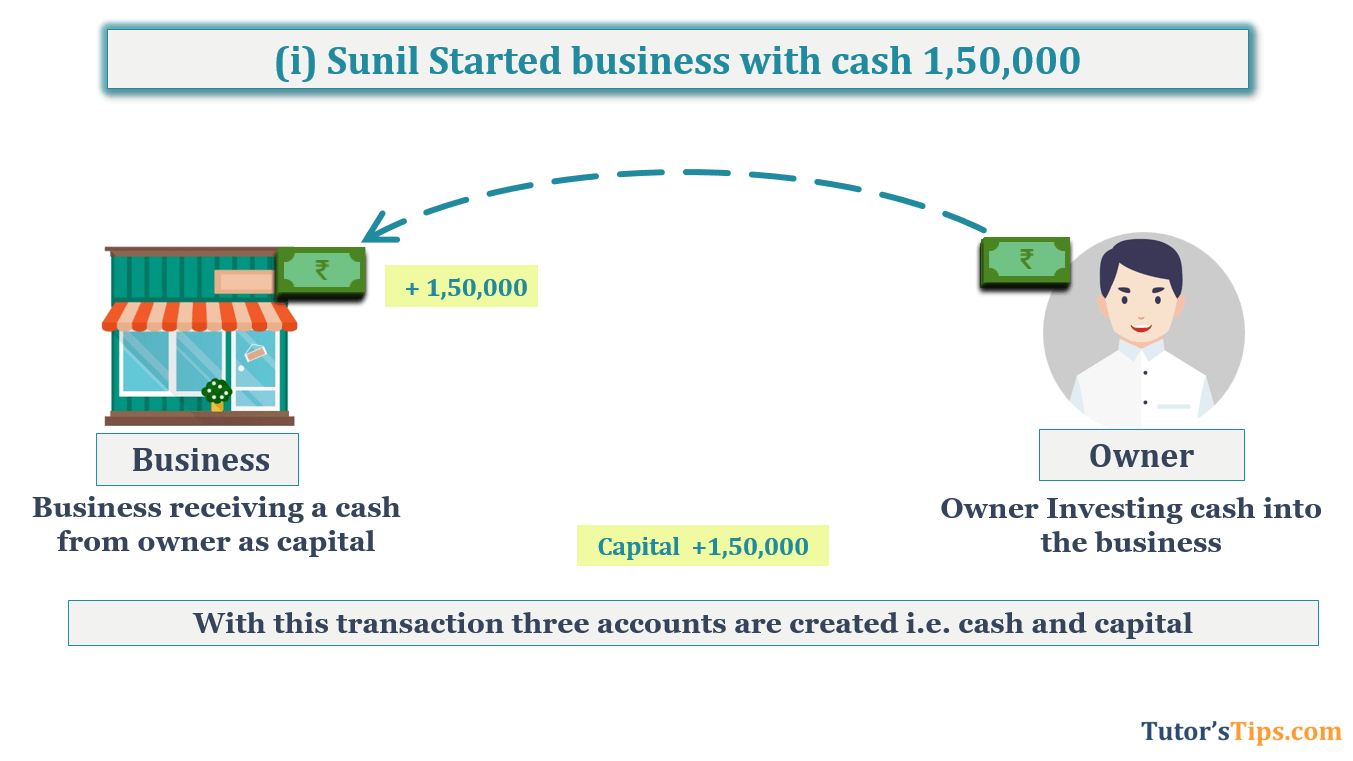
As we discuss in the previous topic, A owner and a business both have a separate identity in the eye of law. So, the business will be treated as an Artificial Person and anything invested by the owner into the business will be treated as capital.
So, In this transaction, as shown in the above image owner investing her cash into the business, this will be treated as capital of the business. The business receiving an asset i.e. cash.
Transaction No. 2

In this transaction, one new asset account will be opened named Bank a/c. Because the business deposited the amount of cash in the bank account.
There will no change in capital or liabilities.
Transaction No. 3
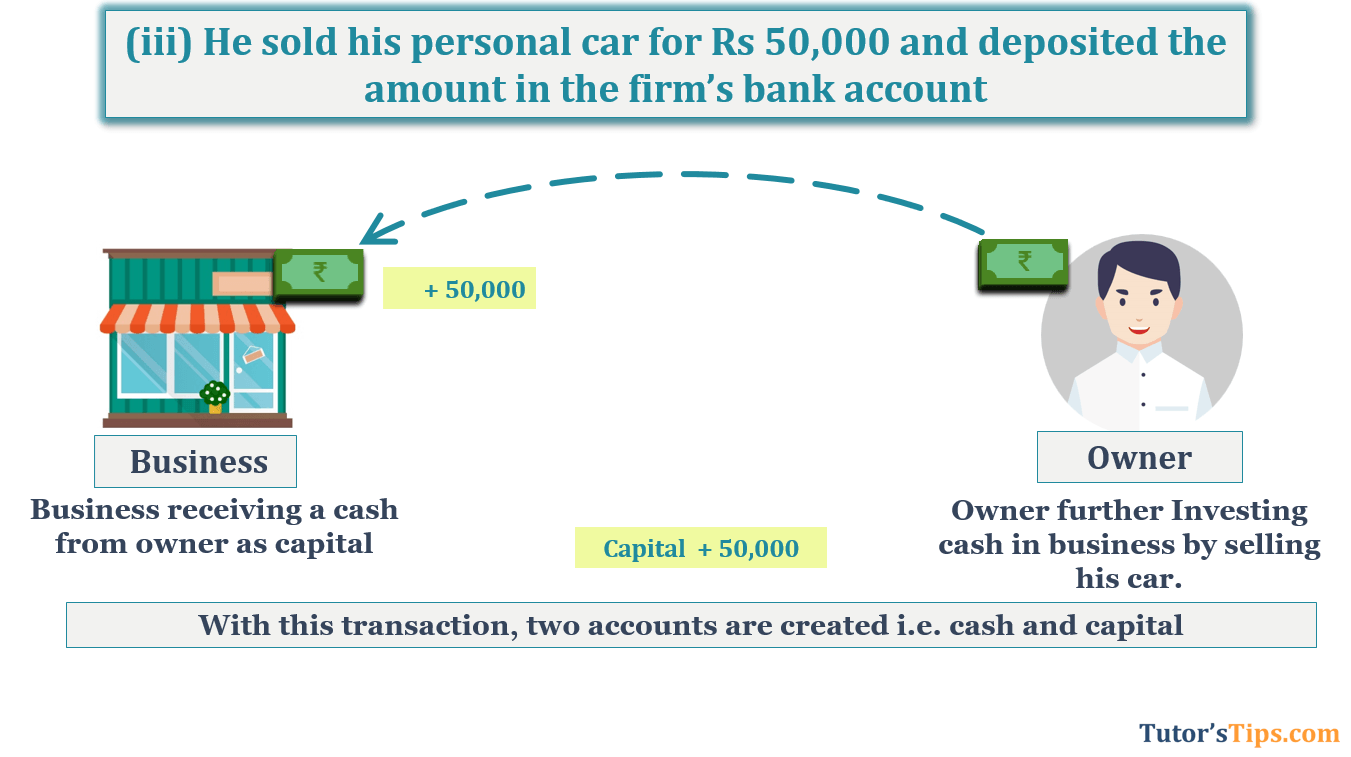
With this transaction, two accounts are created i.e. cash and capital
Advertisement-X
Transaction No. 4

In this transaction, as shown in the above image two accounts are involved Furniture and Cash:
- Building & Furniture a/c (Purchase):- Because business receiving building & Furniture.
- Cash a/c: – Because the business transaction is not clear about the payment so it assumed that it is paid in cash.
Transaction No. 5

In this transaction, as shown in the above image two accounts are involved i.e. Stock (Purchase) and Creditor
- Stock:- Because business receiving goods.
- Creditor: – Because Businesses bought goods on credit, they did not pay anything. But it has to pay in the future. so that’s why Seller becomes our creditor.
Transaction No. 6

In this transaction, as shown in the above image two accounts are involved i.e. cash and capital
- Cash A/c: – Because business cash goes out from the business.
- Capital a/c:- because businesses get services from the transporter and paid them for it. So these is expenses for the business. “ All expenses and losses are deducted from the amount of capital.
Transaction No. 7

In this transaction, as shown in the above image three accounts are affected i.e. Stock(Sale), Capital, and Debtors:
- Stock a/c (Sale):- Because business giving(selling) its goods.
- Debtors (Sohan) : – Because Business sold goods on credit. That’s why he has to pay in future to us, so Shyam becomes our Debtor.
- Capital(Profit): Because the owner has the right to all profit of the business so the amount of the profit will be added in the capital a/c. (Profit = sale price – cost price) 9,000-6,000 = 3,000(Profit)
Transaction No. 8
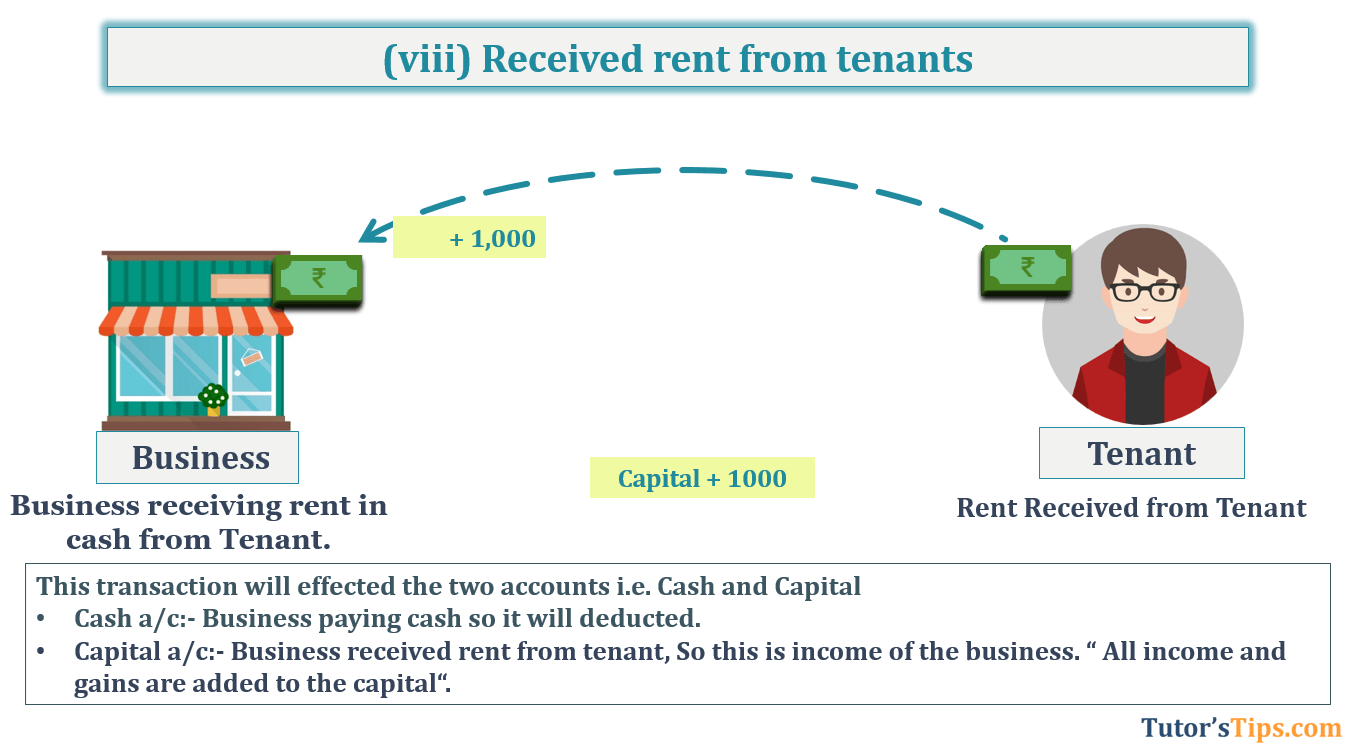
In this transaction, as shown in the above image two accounts are involved i.e. Cash and Capital
- Cash a/c:- Business paying cash so it will be deducted.
- Capital a/c:- Business received rent from the tenant, So this is the income of the business. “ All income and gains are added to the capital“.
Transaction No. 9
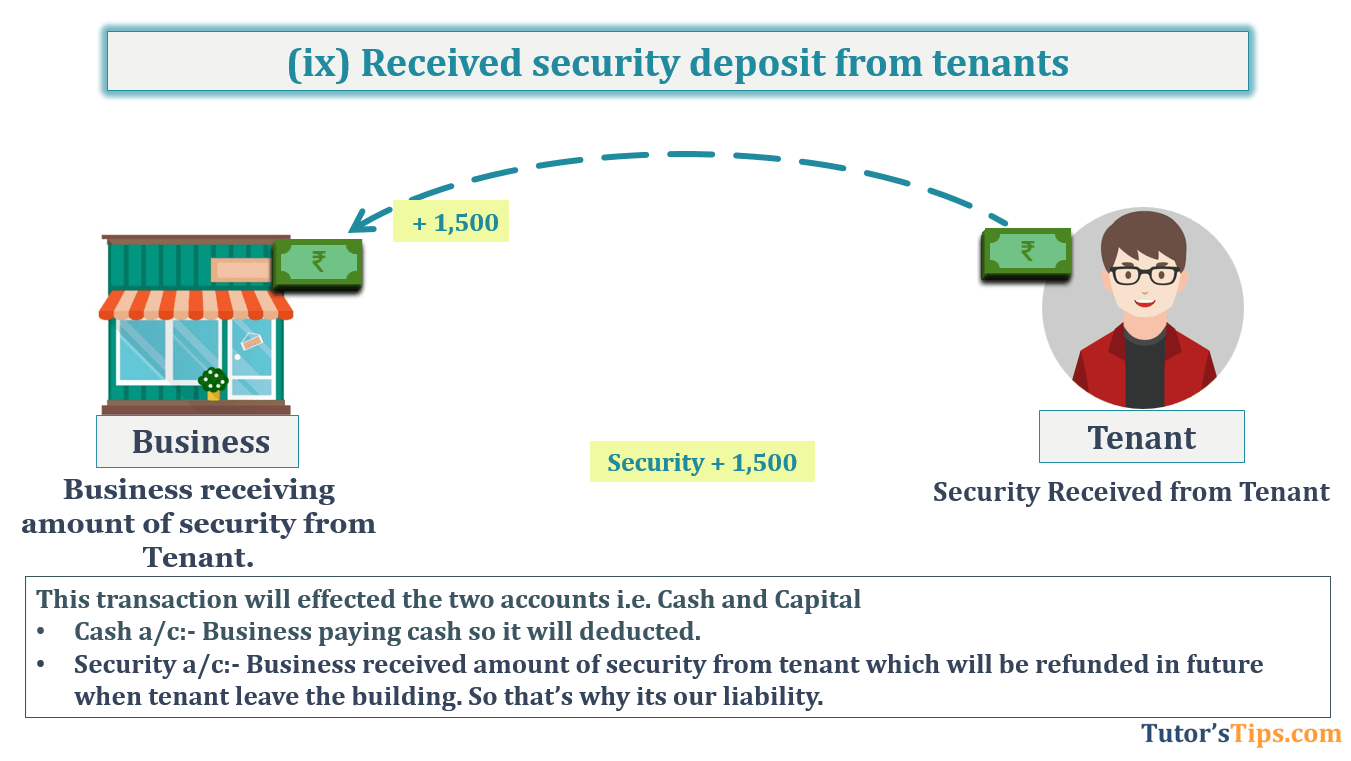
In this transaction, as shown in the above image two accounts are involved i.e. Cash and Capital
- Cash a/c:- Business paying cash so it will be deducted.
- Security a/c:- Business received amount of security from the tenant which will be refunded in future when a tenant leaves the building. So that’s why it is our liability.
Transaction No. 10
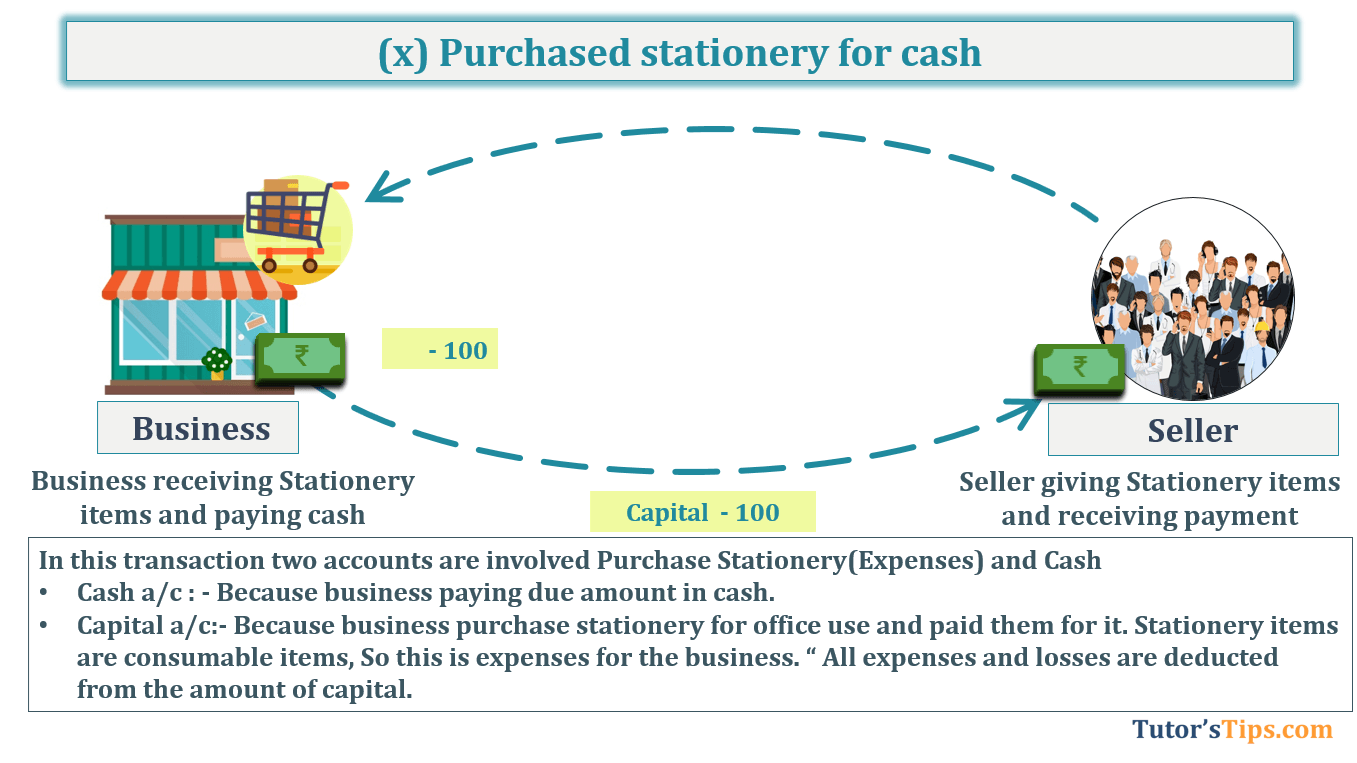
In this transaction, as shown in the above image two accounts are involved i.e. Purchase Stationery(Expenses) and Cash
- Cash a/c: – Because business paying due amount in cash.
- Capital a/c:- Because businesses purchase stationery for office use and paid them for it. Stationery items are consumable items, So this is expenses for the business. “ All expenses and losses are deducted from the amount of capital.
Transaction No. 11
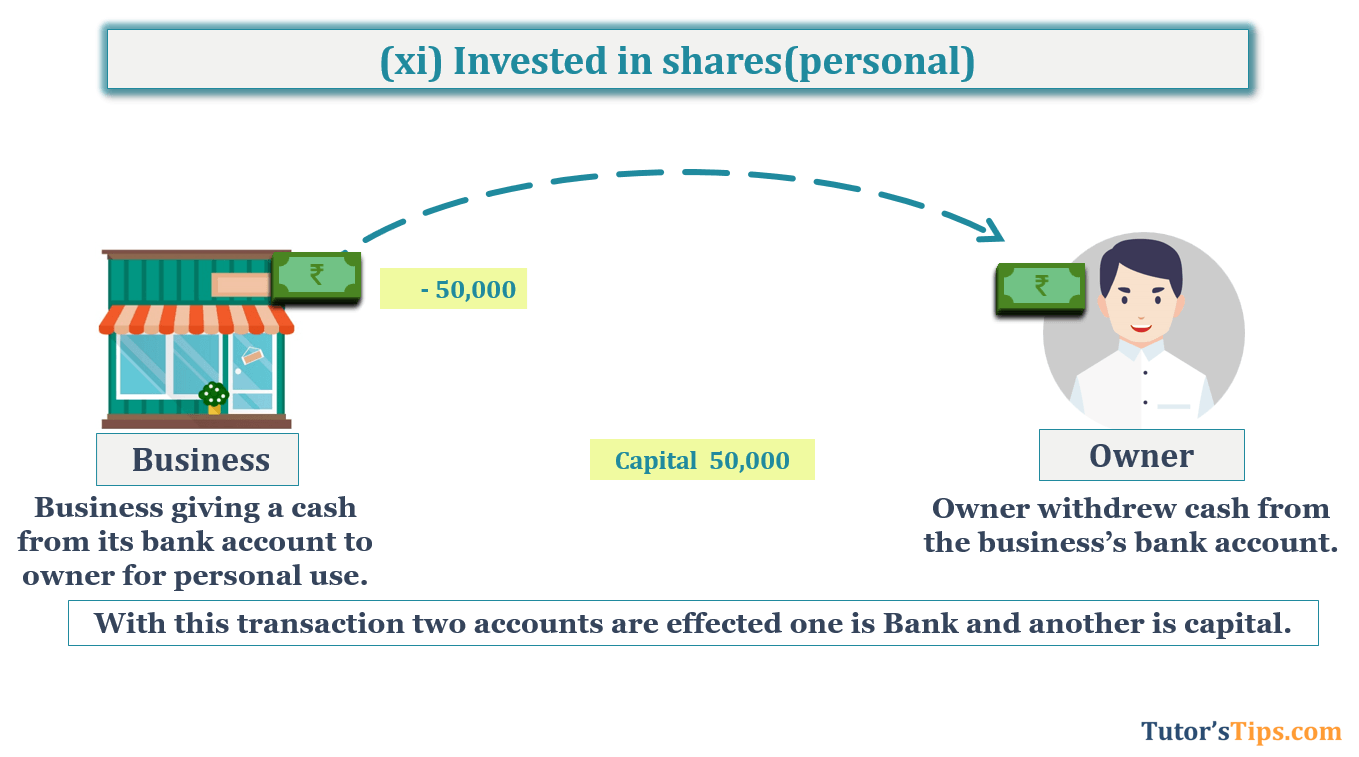
With this transaction, two accounts are affected one is Bank and another is capital.
Transaction No. 12
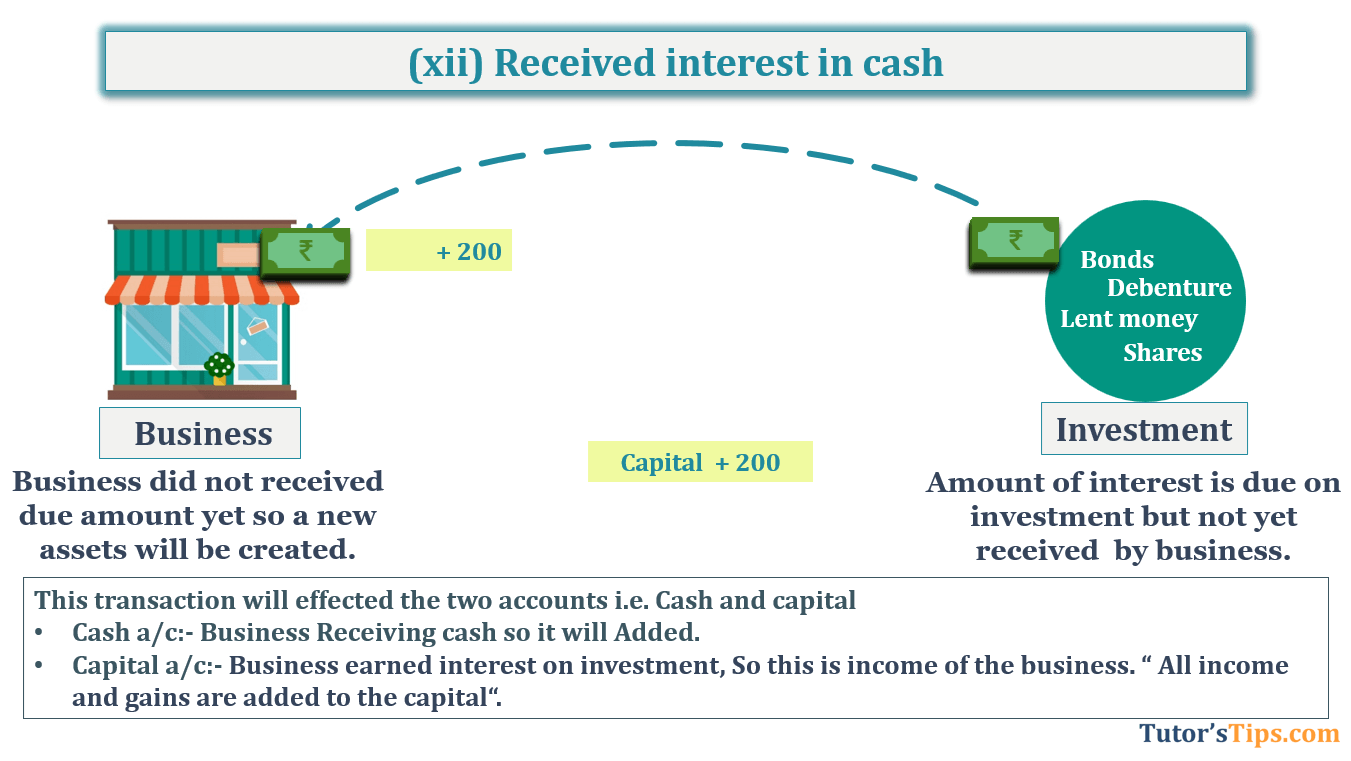
In this transaction, as shown in the above image two accounts are involved i.e. Cash and capital
- Cash a/c:- Business Receiving cash so it will be Added.
- Capital a/c:- Business earned interest on investment, So this is an income of the business. “ All income and gains are added to the capital“.
Transaction No. 13

With this transaction, three accounts are created i.e. cash and capital.
Advertisement-X
Transaction No. 14

In this transaction, as shown in the above image two accounts are involved i.e. Stock (Loss by fire) and Capital(Loss):
- Stock a/c (Sale):- Because business losing its goods.
- Capital(Profit): Because the owner has the right to all profit/loss of the business so the amount of the loss will be deducted from the capital a/c.
Thanks Please share with your friends
Comment if you have any questions.
T.S. Grewal’s Double Entry Book Keeping (Class +1) – Solution
- Chapter No. 1 – Introduction to Accounting
- Chapter No. 2 – Basic Accounting Terms
- Chapter No. 3 – Theory Base of Accounting, Accounting Standards and International Financial Reporting Standards(IFRS)
- Chapter No. 4 – Bases of Accounting
- Chapter No. 5 – Accounting Equation
- Chapter No. 6 – Accounting Procedures – Rules of Debit and Credit
- Goods and Services Tax(GST)
- Chapter No. 7 – Origin of Transactions – Source Documents and Preparation of Vouchers
- Chapter No. 8 – Journal
- Chapter No. 9 – Ledger
- Chapter No. 10 – Special Purpose Books I – Cash Book
- Chapter No. 11 – Special Purpose Books II – Other Books
- Chapter No. 12 – Bank Reconciliation Statement
- Chapter No. 13 – Trial Balance
- Chapter No. 14 – Depreciation
- Chapter No. 15 – Provisions and Reserves
- Chapter No. 16 – Accounting for Bills of Exchange
- Chapter No. 17 – Rectification of Errors
- Chapter No. 18 – Financial Statements of Sole Proprietorship
- Chapter No. 19 – Adjustments in preparation of Financial Statements
- Chapter No. 20 – Accounts from incomplete Records – Single Entry System
- Chapter No. 21 – Computers in Accounting
- Chapter No. 22 – Accounting Software – Tally
Check out T.S. Grewal’s +1 Book 2019 @ Official Website of Sultan Chand Publication
T.S. Grewal’s Double Entry Book Keeping

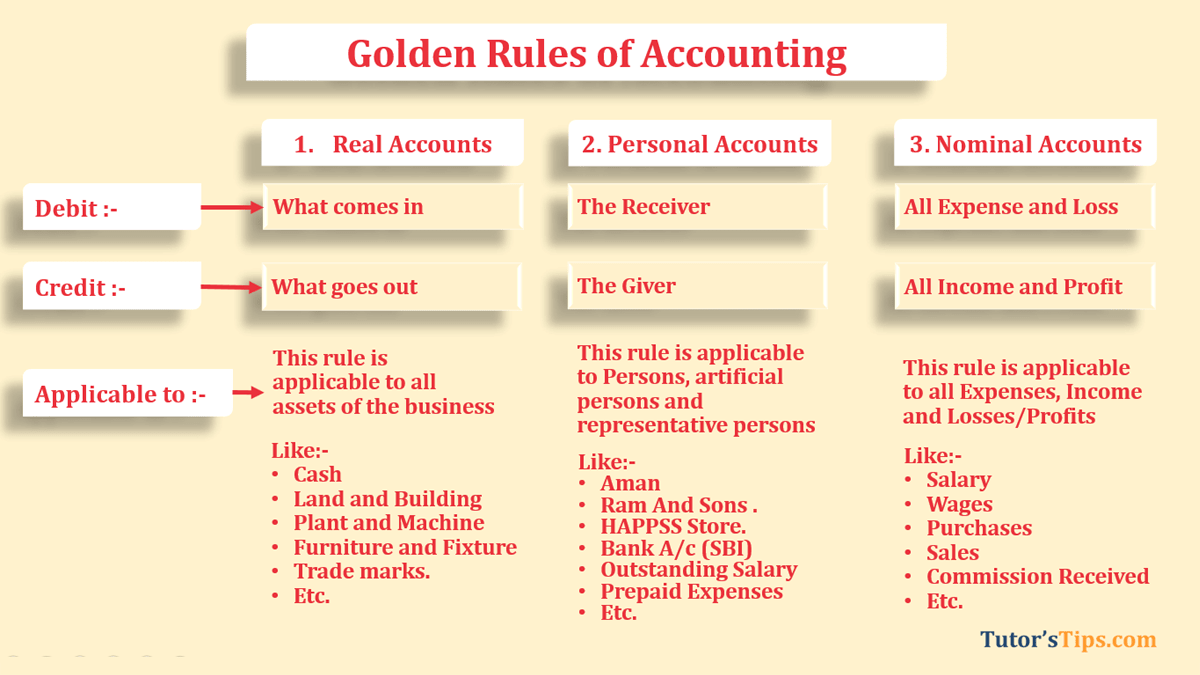




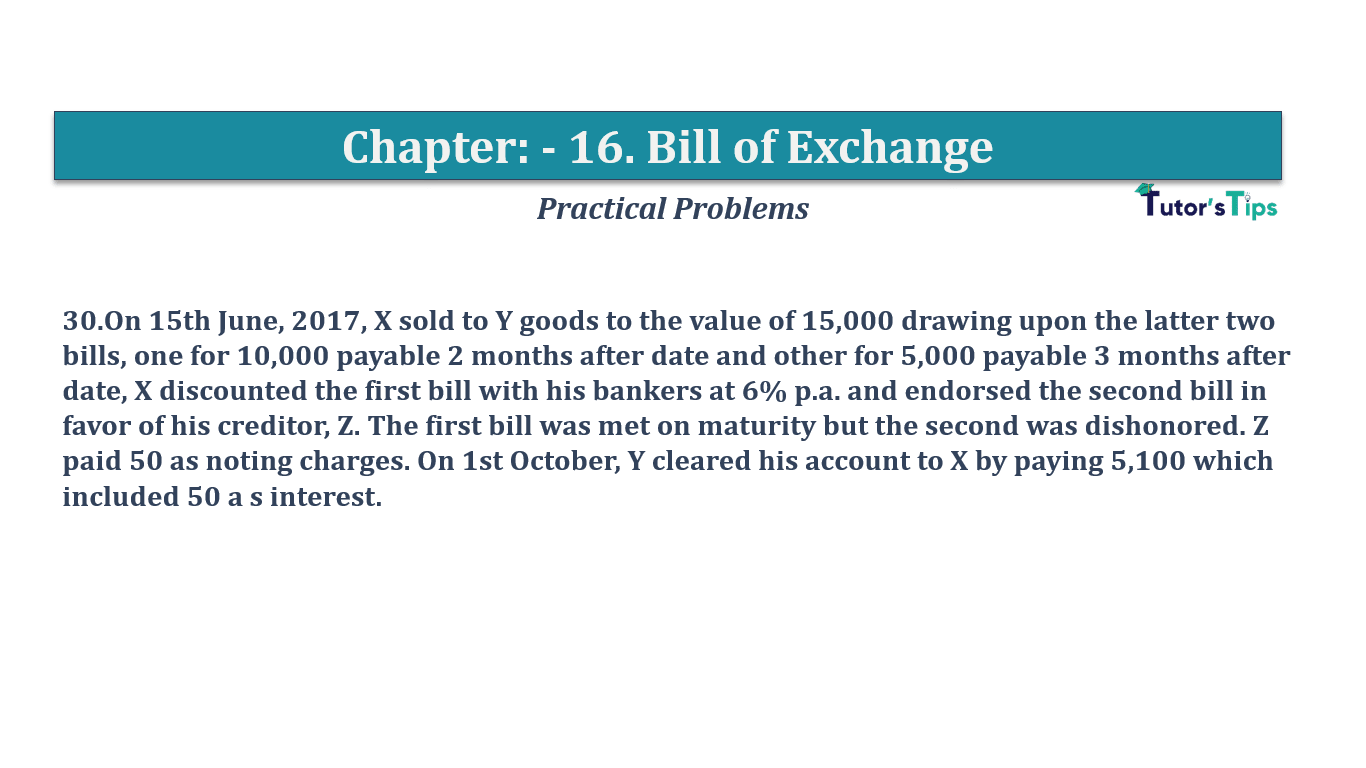


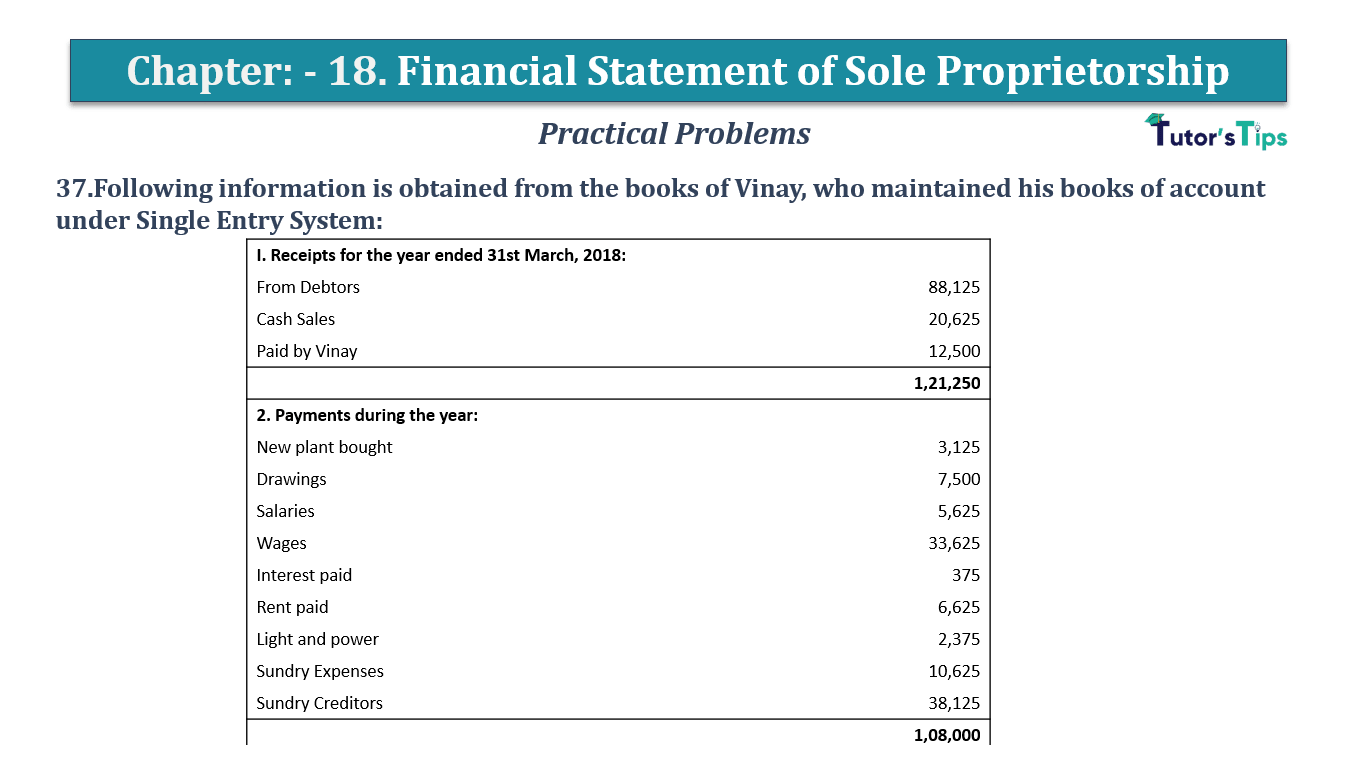


2 Comments